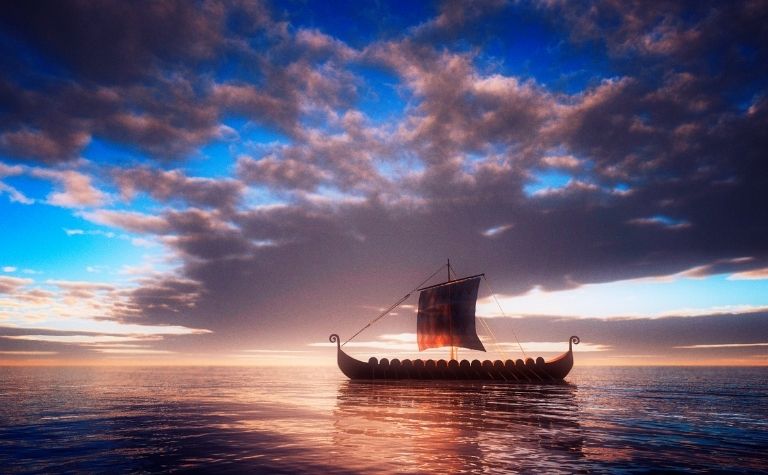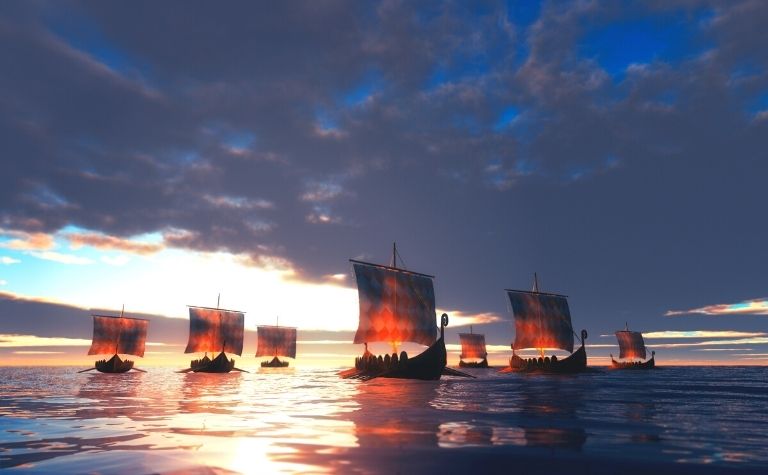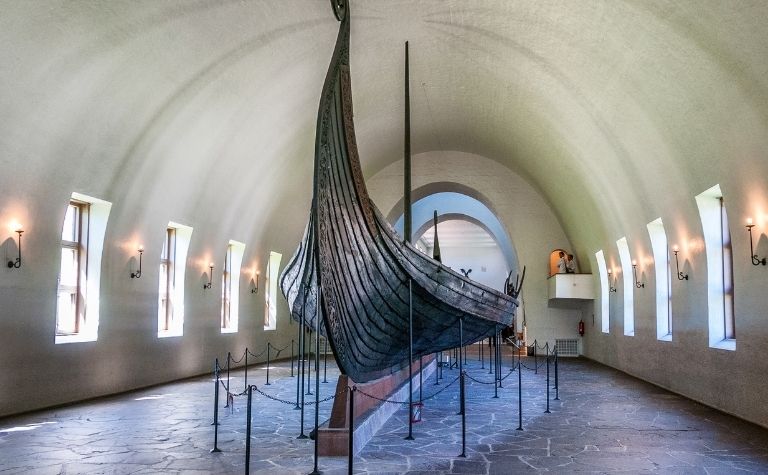Between the 9th and 11th centuries, Vikings spread terror in the hearts of men across the length and breadth of Europe.
The series of daring raids they executed earned them a fearsome reputation and changed history. But were the Vikings themselves afraid of anyone?
Vikings were afraid of their gods and failure to live up to Norse norms of conduct. They followed a code of honor that preferred an honorable death to cowardice.
Additionally, their preferred mode of attack suggests that Vikings avoided confronting unfavorable odds in battle where possible.
The remainder of this article will look into the origins of the Vikings’ reputation for bravery, list their enemies, and explain what they did to cowards.
Also see Did the Vikings Fight the Mongols? to learn more.

Why Are the Vikings Known for Bravery?
Vikings are known for bravery because they were disciplined warriors.
They followed a strict code of honor and believed an honorable death was preferable to cowardice.
Their appetite for violence made them seem fearsome to their early victims, many of whom were unarmed and unprepared civilians.
Apart from their great skill in battle, the Vikings were also a highly disciplined and well-organized military force.
Strong social bonds bound them to each other and deterred individual acts of cowardice.
These bonds made a horde of Vikings terrifying in their intensity and formidable in their relentlessness.
The Norse religion of the Vikings valorized death on the battlefield. Such a death assured one of a seat in the great hall of the god Odin, Valhalla. [1]
Here sumptuous feasts would be held every night as the warriors awaited Ragnarok, the end of the world, where they would fight alongside Odin’s forces.
Norse society valued honor, bravery, honesty, and mutual respect above all else. At the same time, it placed a strong taboo on cowardice.
Cowardly, treacherous, or dishonest behavior was seen as despicable, universally condemned, and could result in severe consequences, including ostracisation and even death.
The Vikings were also skilled shipbuilders and seafarers. Unafraid of the open seas, they ventured as far as Russia in the east and America in the west.
At the same time, their shallow-hulled long boats allowed them to cruise up rivers, giving them the element of surprise.
The Vikings also had some of the most advanced weapons manufacturing abilities of their time.
Finally, not all Norsemen were Vikings. Only those warriors who traveled on raiding parties earned the name.
That is, the subset of Norsemen known as Vikings were expressly selected for the purpose of war and plunder.
While all these factors made the Vikings exceptionally well-equipped to play the role of the fearsome marauder, one additional detail spurred their early reputation.
Vikings preferred to raid unarmed civilian encampments, and rich monasteries were a favorite target of theirs.
Notably, they carried out their most daring feats in the centuries after Europe had seen off waves of fearsome foreign adversaries.
Labeled barbarians, such enemies included the fierce Mongol and Islamic armies.
These predecessors set the tone for how the Vikings would be perceived by their victims.
Since Norse culture was primarily oral, most of the early sources that record Viking encounters were put down by the descendants of their first victims.
Inevitably, their perspective made the Vikings out to be savage in their brutality and terrifying in their fearlessness.
Also see Did the Vikings Wear Armor? to learn more.

Who Were the Vikings’ Enemies?
The Vikings’ chief enemies were the Anglo-Saxons and Franks of present-day England and France.
While they did fight everyone from Russians and Arabs to native American tribes people, their most frequent and prolonged battles were in their immediate neighborhood.
The Vikings first made an impression in the history books with their raid on the monastery at Lindisfarne in 793 A.D. [2]
Over the next few decades, the Vikings conducted many raids along the east coast of England and the North coast of France.
These were wealthy inhabited regions in the immediate vicinity of their Scandinavian homelands.
The Vikings were tactically-minded and favored wealthy but unarmed civilian targets to maximize their advantage.
Frequently, they used better information and stealth to make their attacks.
Notable adversaries of the Vikings included King Alfred of England and Charlemagne, King of the Franks.
Alfred was forced to cede large parts of North-East England to Viking control.
Eventually, the Vikings also settled large parts of the Frankish coast, where they came to be known as Normans.
The Vikings did travel much further. They conducted trade with the Russians and the Arabs, made up the personal bodyguard of the Byzantine Roman Emperor, and temporarily settled parts of Canada.
However, most of these deployments were as part of transactional and short-term exchanges.
In the long run, the Anglo-Saxons and Franks remained their most formidable adversaries.
Ironically, by the time of the decline of the Vikings, they had become significantly enmeshed in these very populations.
The residue of these past exchanges can even today be seen in the language, architecture, law, and culture of these regions.
Also see Why Did the Vikings Invade Paris? to learn more.

What Did Vikings Do to Cowards?
Vikings punished cowardice with exile or death. Their culture valued bravery, honesty, nobility, and mutual respect above all.
It abhorred cowardice and treachery and saw them as bringing lasting shame and disrepute to individuals who displayed such behavior.
The Norse religion of the Vikings extolled bravery, honesty, and honor.
The most desirable death, it proclaimed, was to be found on the battlefield.
Such a death entitled the fallen warrior to a seat at Valhalla, the hall of their great god, Odin, where they enjoyed great feasts in his company until the end of the world.
Norse customs and laws also placed a great premium on fidelity and honesty.
A dishonest individual would not only face punishment under the law, they would also face social ostracization and find it difficult to find cooperative partners for future contracts.
Because cowardice dishonored a Viking and let down his fellow warriors, it was seen as among the worst of offenses.
A Viking who displayed cowardice was said to have brought dishonor and shame upon himself.
Often he could be exiled and would have to fend for himself in the wilderness for up to 20 years.
A Viking who showed cowardice could also be challenged to a duel and legitimately killed by an opponent, as long as this was done openly.
Mostly though, the strong taboo against cowardice and traditional valorization of bravery worked to inculcate a culture where death and self-respect were preferred to cowardice and shame.
Conclusion
Vikings feared their gods and violations of societal norms. They had formidable enemies and preferred to use the element of surprise to counter them.
Also see What Color Eyes Did the Vikings Have? to learn more.
